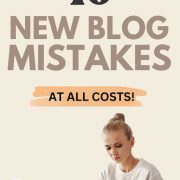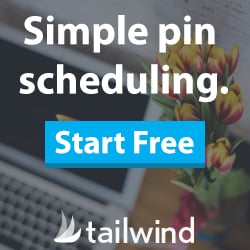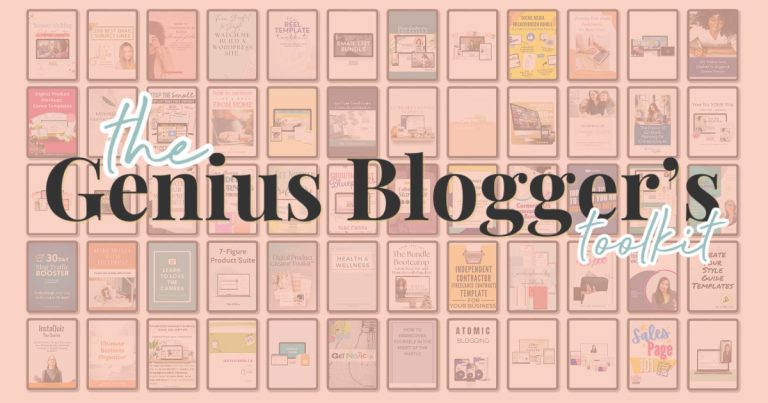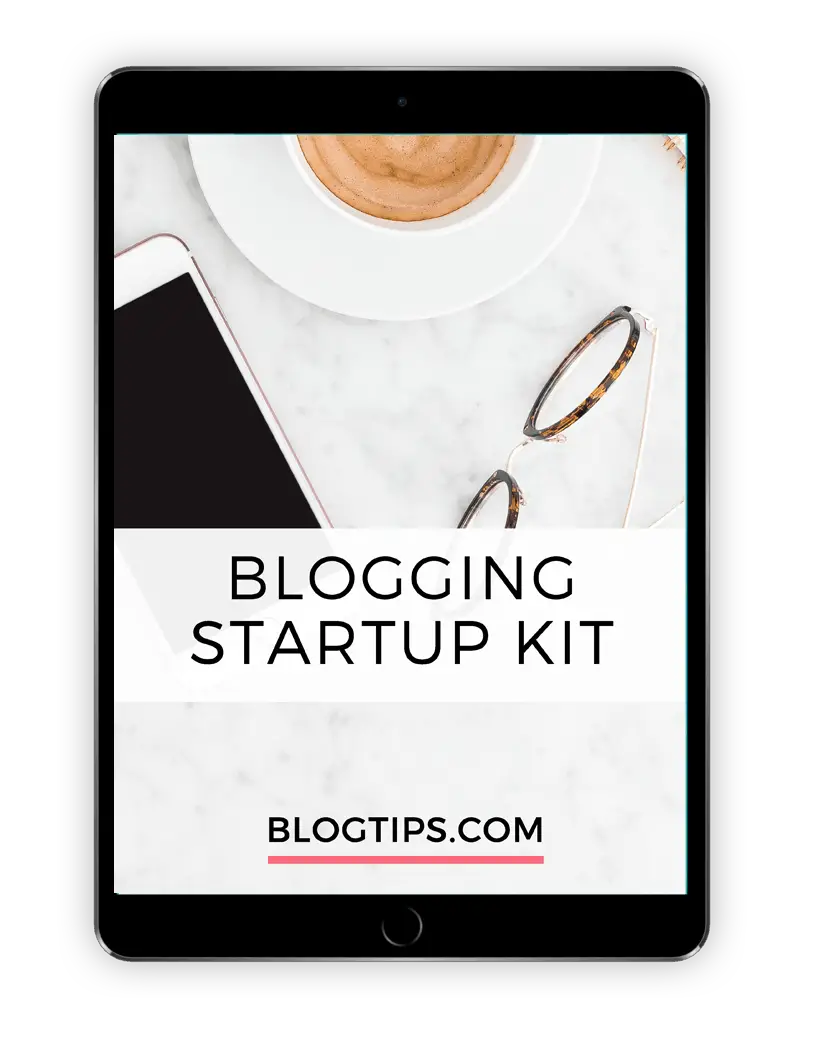10 Things Not to Do When Starting a Blog

When starting a new blog, there is a lot to think about. This list of 10 things not to do when starting a blog, is a good place to start.
It’s tempting just to jump into blogging head first. But without proper research, it’s likely you’ll run into a few glitches – I’ve definitely had my fair share!
As an affiliate partner of various brands and sponsored content, HerPaperRoute may earn commission on qualifying purchases. Disclaimer
While you’ve probably researched all the things you SHOULD do.
Now you need to know the things you SHOULD NOT do when starting a blog.

10 Things Not to Do When Starting a Blog
While there is a lot to learn when starting a blog. Don’t let it put you off!
I’m going to help you avoid as many of the common new blogging mistakes as I can.
If you haven’t started a blog yet, check out my beginner guide on how to start a blog from scratch
Let’s take a look at 10 things not to do when starting a blog.
1. Don’t Start Your Blog on a Free Blogging Site
If you ever want to make money from your blog, it’s important to set it up on a professional platform.
The free options like Wix, Joomla, and the .com version of WordPress can look spammy and unprofessional.
Often they come with ads that don’t even make you money and will hinder a reader’s experience.
Of course, if you just want to practice your writing and not make a career from your blog. A free platform is great. Other free options to use are; Hubpages and Medium.
A good idea is to start writing on these platforms for experience, then once your self-hosted site is set up, you can link people from those posts to your live site.
I set up my site with WordPress.org. It’s super easy even for a beginner to set up their own functional website.
2. Don’t Try and Do Everything for Free
Another of the 10 things NOT to do when starting a blog is – don’t try and do everything for free.
I’ve been there myself and I understand funds can be tight in the beginning.
But, if you want your blog to eventually generate income, it’s a good idea to invest some money into it and yourself.
I tried to do everything for free in the beginning and now I look back I wish I’d invested more at the start.
Some things worth spending money on are;
A professional blog theme.
There are free ones in WordPress, but the paid ones look far more professional and give a much better user experience.
Just like any business, you have to think about your blog through the eyes of your customers (readers).
Give them a good experience and they’ll come back. Check out the top themes I recommend.
Technical and design help from experts.
The first website I ever built, I did everything myself. While I was proud, I sometimes wasted days trying to do one thing and the design was awful.
Know that if you have a problem, you can reach out to an expert on Fiverr, for an affordable solution.
A quality hosting company.
For only a few dollars a month, you can self-host your website. I use these guys and they keep my website fast, offer top-notch security and are available 24 hours a day for support.
A blogging course.
While it is possible to learn a lot by reading content online, you will learn much more after taking some good blogging courses.
Having the exact steps written down for you to follow is invaluable. Enroll in a class here, and also take a look at the Genius Bloggers Toolkit which launches in September.
3. Don’t Just Write Content When You Feel Like It
The key to successful blogging is consistency. If you can publish a couple of articles a week, great. Just do what you can and stick to it.
Even if it feels like no one is reading yet.
To build credibility and increase your blog’s Google ranking, blogging regularly is the ticket.
The more content you produce around a subject, the more Google will see you as an expert in a niche and your domain authority will increase.
4. Don’t Forget to Promote Your Posts
It’s tempting to just write a post and hope it will get seen by everyone. I used to do this as a new blogger and believe me, it doesn’t work!
The thing is, the work doesn’t stop after you’ve written an amazing post.
You need to get your post out there on social media for it to be seen. Here’s what to do after writing a post;
- Schedule it to all your social media accounts
- Send it out to your email list and ask them to share
- Use a post-recycling scheduler to send it out on social media at least three times. Not all of your audience will see the initial release of the post.
- Email/message any influencers you mention in the post. Some will reply saying thanks and some will even schedule your post on their own accounts
- Share your pins to Pinterest. Even after the initial Pinterest promotion, you can create fresh pins for the same post and re-schedule it again. Pinterest sees new pins as good as fresh content and it’ll give your post a new boost every time
- Use Tailwind Communities. This awesome platform allows you to share Pinterest pins in groups of topics. When you share other people’s pins from the group to your Pinterest account, your rating goes up, allowing you to submit more of your own pins, for others to on their accounts. This is a valuable way to get your posts in front of millions of other eyes like you never normally would as a new blogger
Related read: 11 simple techniques guaranteed to increase blog traffic
Get your FREE 30-day trial of Tailwind (Pinterest scheduler) here.
5. Don’t Forget to Collect Emails
Getting your blog readers onto an email list is essential to long-term success.
Many readers will visit your blog and you’ll never see them again if you don’t get them onto an email list.
A way to keep in contact and build up the know, like and trust factor is through email contact.
Social platforms will constantly change their rules and accounts may even be suspended.
This could mean losing your hard-built raving fans.
Your email list is yours and can never be taken away. You have complete control and it’s a great way to promote new products and new posts.
Get readers onto your email list by offering a free, valuable lead magnet.
Related read: The dos and don’ts of creating a lead magnet that converts
You can start an email list for free on Mailchimp. But for more functionality and as your list grows, I can recommend this tool as the best. Here you can not only create email sequences but build landing pages, newsletters, forms, and funnels.
6. Don’t Ignore SEO
Another important point on 10 things not to do when starting a blog is DO NOT ignore SEO (search engine optimization).
SEO is extremely important for building your blog’s authority and getting it seen on the first pages of Google.
Learn SEO and you’ll learn how to get traffic to your blog.
SEO may seem complicated in the beginning, but don’t let that put you off. There is a lot to learn but learn it in stages.
Read up as much as you can about SEO from other experts online.
7. Don’t Use Copywrited Images
Just because Google shows a ton of images in search, does not mean you can use any of them.
Most of those images are copyrighted and you shouldn’t just use them without asking the owner’s permission.
Instead, you will need to use stock images that you have the legal rights to use. Think about making your own in Canva, too. Canva Pro users get to access a huge library of royalty-free images.
Having personalized graphics on your site will set your blog apart from the rest.
As noted, Canva has a ton of free stock photos available to use and you can add in your own text and logo.
8. Don’t Dismiss Keyword Research
When you are starting your first blog, you may have no idea about keyword research.
Without doing keyword research, you won’t be able to base your content around what people are searching for in Google. This means, your blog posts would never be found organically in Google.
Learn about keyword research and start to write content around keywords you find.
Some people suggest you should Start with lower-ranking, less popular keywords. Then as your domain authority grows, you can start to compete for higher-ranking keywords. But I believe you should start with a mix of lower and higher keywords, not wait, to grow more efficiently.
If you’ve already written many blog posts with no keywords – do not fear. You can go back and update your posts with keywords that will help them to rank in Google.
The Rank Math plugin is essential to help optimize your posts with keywords. Once it’s installed, it tells you what you need to do with every post to have a good SEO score.
I also recommend Keysearch which is only $15 a month. Try it out here with a FREE 30-day trial.

9. Don’t Focus on Useless Tasks and get Overwhelmed
I’ve definitely been here as well – overwhelm is real!
There are many things to get done as a new blogger.
But trying to do too much at once and getting overwhelmed is one of the 10 things NOT to do when starting a blog, if you want to last.
If you still have another job, you need to use your blogging time wisely.
Write down a list of things you need to do for your blog daily. But, only focus on the top three.
And make sure these three things will actually have a positive effect on your blog.
Definitely read my story about how I crafted a solid blogging routine.
It’s so easy to get caught up in things that won’t move the needle.
For example, things like constantly re-designing your logo. Or spending hours agonizing over your color scheme.
Yes, these things are important, but it’s amazing how many hours can be wasted on these tasks.
When you could be doing more profit-generating tasks like working on social media or your SEO.
Remember, the design of your blog can always be changed down the line.
Always plan your time the day before and have a list ready of things you need to get done that make a difference.
10. Don’t Focus on Making Money Over Getting Traffic
This point ties in with number nine. It’s not about how much you work on your blog, it’s the quality of work you do.
Two hours a day focusing on the right things will be far more beneficial than five hours faffing about on useless tasks.
And, I know it’s hard not to focus on making money when you need it.
But, to get to the money-making stage, you need to get traffic to your blog. And once you have traffic, you need more traffic!
Traffic will be the lifeblood of your blog and will determine whether it lasts or makes money.
You can monetize your site from day one.
But, no matter how hard it is, don’t worry about how much it’s earning in the beginning, just focus on getting traffic.
And, avoid using an ad network in the beginning. Too many ads will just hinder a reader’s experience and may put them off.
When you’re a new blogger, you need to think about giving the best possible experience for your readers, to keep them coming back.
10 Things Not To Do When Starting A Blog – Conclusion
Those are the 10 things you should not do when starting a blog.
As a beginner blogger, there’s a lot to learn. So don’t beat yourself up if you make any or all of those mistakes.
Most bloggers, even hugely successful ones make some mistakes.
Mistakes teach us a lot. Just learn from your mistakes, move on, and share your experiences with others like I am here.
Let me know in the comments if you’re a new blogger. Is there anything you’re struggling with that I can help with? I’d love to know…
If you haven’t started your blog yet, read my in-depth start a money-making blog guide here.
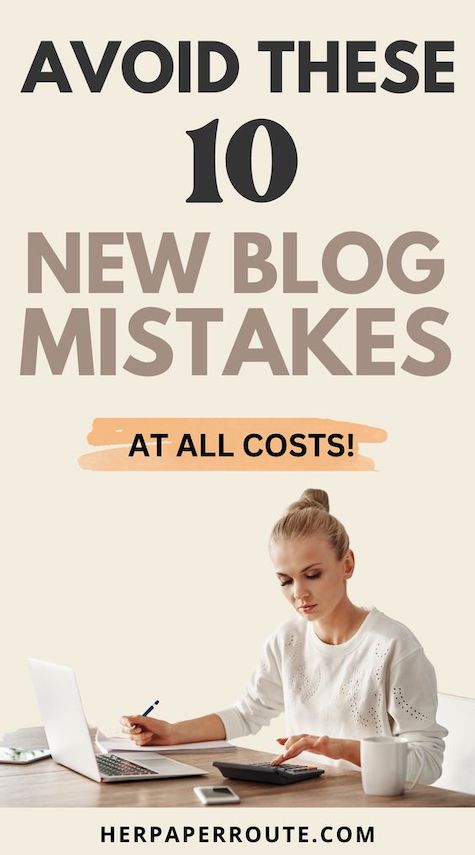
Follow along on Instagram!


